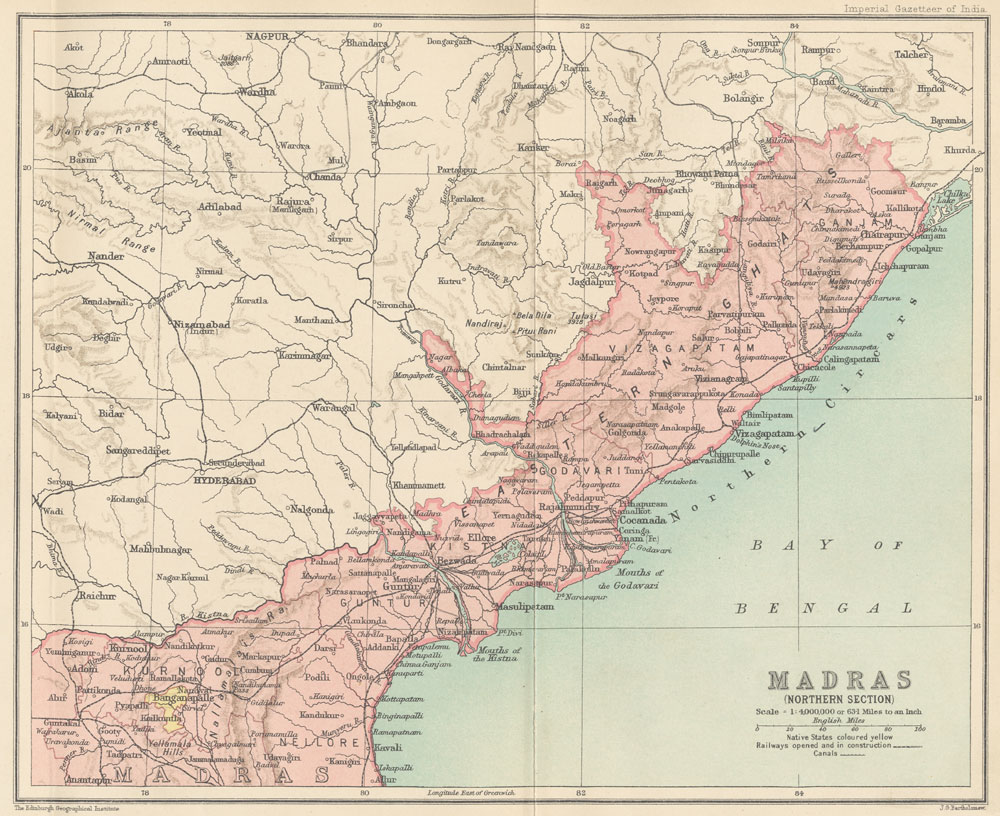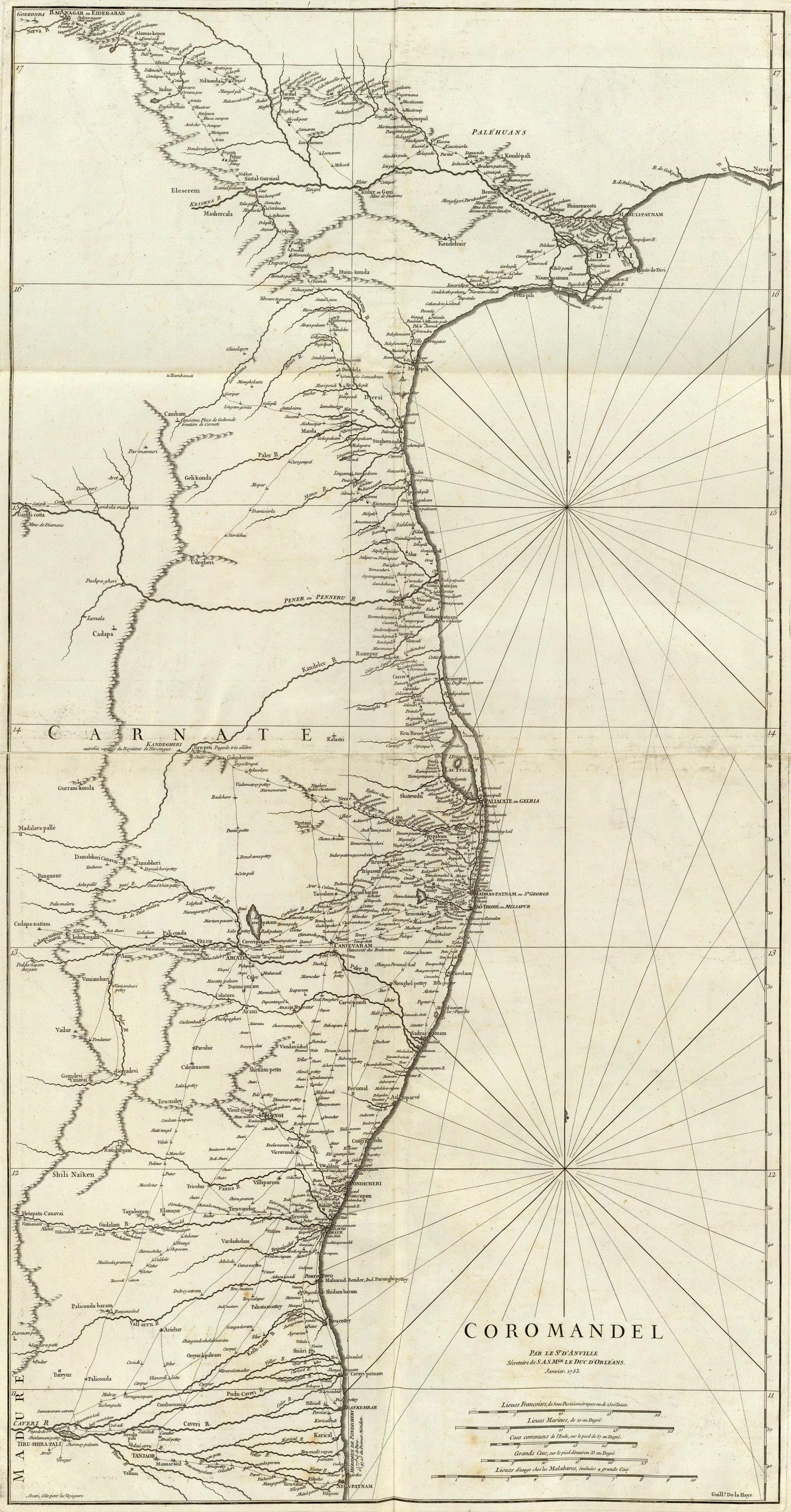|
Punjum
Punjum (panjam, pŭn′jŭm; pun jum) was a type of Indian cotton cloth. It was produced in the Northern Circars, on the Coromandel Coastal region in South East India. Punjum was a kind of cotton longcloth that was produced in a variety of thread counts. Varieties of punjum Punjum was a woven fabric structure with an unusually strong texture. It was manufactured with a variety of widths from coarser to finer qualities (The finer the threads the greater number of punjums were contained in the breadth up to 40). There were Punjums available with a 120-thread count . A Punjum was regarded as a sign of quality, there were different numbers assigned for different grades ranging from 10,12,14,16, 18 up to 40.The lowest and coarse was called number 10. Later, Baramauhal successfully duplicated an imitation of Punjum which was a cloth with a lower thread count and half the length of the former. It was named Salampore. Dimensions John Forbes Watson used sample 466 to show Punjum ... [...More Info...] [...Related Items...] OR: [Wikipedia] [Google] [Baidu] |
Piece Goods
Piece goods were the textile materials sold in cut pieces as per the buyer's specification. The piece goods were either cut from a fabric roll or produced with a certain length, also called yard goods. Various textiles such as cotton, wool, silk, etc., were traded in terms of piece goods. The prices were determined as per the fabric quality. John Forbes Watson classified Indian textiles into two types: piece goods and loom goods. Piece goods are materials that must be cut and sewn before they can be used, whereas loom goods, such as scarves and Saris, are ready to use after leaving the loom. Production Many Indian clothes were ready to wear after leaving the loom. These were simple pieces of cloth of dimensions suited to the purposes. Lungi, Dhoti, and Sari are few specific examples of drape clothes. Other cloths produced according to specified dimensions are: * Longcloth made at Coromandel Coast was of the length of 37 yards or 37 to 40 yards. * Qutni at Damascus was weaved ... [...More Info...] [...Related Items...] OR: [Wikipedia] [Google] [Baidu] |
Salampore
Salampore (salempore) was a kind of cotton cloth produced in India. It had been in use since the 17th century and was exported to Europe and Africa.''There were three staple varieties of cotton cloth manufactured in Coromandel - longcloth , salempores and moris . These three varieties accounted for by far the largest volume of export and were extensively woven in looms from North to South ...''Merchants, Companies, and Commerce on the Coromandel Coast, ...books.google.co.in › books Page 98 Exports Salempores was part of a varied collection of cloths such as long cloth, moris, and cloth with gold thread exported to various foreign locations like Bantam, Manila, and London from the Coromandel Coast. It was also exported to Africa and South America. Production Salampore was produced at various locations of India from north to down south. Pattern It was a colored woven cloth with stripe and check designs. Few sources also describe it as broad white or blue cotton fabric. ... [...More Info...] [...Related Items...] OR: [Wikipedia] [Google] [Baidu] |
Cotton
Cotton is a soft, fluffy staple fiber that grows in a boll, or protective case, around the seeds of the cotton plants of the genus ''Gossypium'' in the mallow family Malvaceae. The fiber is almost pure cellulose, and can contain minor percentages of waxes, fats, pectins, and water. Under natural conditions, the cotton bolls will increase the dispersal of the seeds. The plant is a shrub native to tropical and subtropical regions around the world, including the Americas, Africa, Egypt and India. The greatest diversity of wild cotton species is found in Mexico, followed by Australia and Africa. Cotton was independently domesticated in the Old and New Worlds. The fiber is most often spun into yarn or thread and used to make a soft, breathable, and durable textile. The use of cotton for fabric is known to date to prehistoric times; fragments of cotton fabric dated to the fifth millennium BC have been found in the Indus Valley civilization, as well as fabric remnants dated back ... [...More Info...] [...Related Items...] OR: [Wikipedia] [Google] [Baidu] |
Northern Circars
The Northern Circars (also spelt Sarkars) was a division of British India's Madras Presidency. It consisted of a narrow slip of territory lying along the western side of the Bay of Bengal from 15° 40′ to 20° 17′ north latitude, in the present-day Indian states of Andhra Pradesh and Odisha. The Subah of Deccan (Hyderabab/Golconda) consisted of 22 circars. These northern circars were five in number and the most prominent ones in the Subah. They became British in a protracted piecemeal process lasting from 1758 to 1823, involving diplomacy and financial settlements rather than military conquest. The annexation by the British of the Northern Circars deprived Hyderabad State, the Nizam's dominion, of the considerable coastline it formerly had, assuming the shape it is now remembered for: that of a landlocked princely state with territories in Central Deccan, bounded on all sides by British India. Etymology ''Circar'' was an English spelling of ''sarkar'', a Mughal term ... [...More Info...] [...Related Items...] OR: [Wikipedia] [Google] [Baidu] |
Coromandel Coast
The Coromandel Coast is the southeastern coastal region of the Indian subcontinent, bounded by the Utkal Plains to the north, the Bay of Bengal to the east, the Kaveri delta to the south, and the Eastern Ghats to the west, extending over an area of about 22,800 square kilometres. The coast has an average elevation of 80 metres and is backed by the Eastern Ghats, a chain of low lying and flat-topped hills. In historical Muslim sources from the 12th century onward, the Coromandel Coast was called Maʿbar. Etymology The land of the Chola dynasty was called ''Cholamandalam'' (சோழ மண்டலம்) in Tamil, translated as ''The realm of the Cholas'', from which the Portuguese derived the name ''Coromandel''.''The Land of the Tamulians and Its Missions'', by Eduard Raimund Baierlein, James Dunning BakerSouth Indian Coins – Page 61 by T. Desikachari – Coins, Indic – 1984Indian History – Page 112''Annals of Oriental Research'' – Page 1 by University of Madras � ... [...More Info...] [...Related Items...] OR: [Wikipedia] [Google] [Baidu] |
Longcloth
Longcloth (or long cloth) refers to a plain cotton cloth originally made in comparatively long pieces. The name was applied particularly to cloth made in India. The long cloth made at Coromandel Coast was of the length of 37 yards. Longcloth, which is now commonly bleached, includes several various qualities. It is heavier than cambric, and finer than medium or Mexican. In the early 1900s, as it was used principally for underclothing and shirts, most of the longcloth sold in Great Britain passed through the shirt and underclothing manufacturers' hands who sold it to the shopkeepers. However, there was still considerable if decreasing retail trade-in piece-goods. In the UK in the early 20th century, the lower kinds of longcloth, which were made from American cotton, corresponded in quality to the better kinds of shirting made for the East, but the best longcloths were made from Egyptian cotton and were fine and fairly costly goods. Nowadays, longcloth designates a cotton fabric wh ... [...More Info...] [...Related Items...] OR: [Wikipedia] [Google] [Baidu] |
Units Of Textile Measurement
Textile fibers, threads, yarns and fabrics are measured in a multiplicity of units. * A fiber, a single filament of natural material, such as cotton, linen or wool, or artificial material such as nylon, polyester, metal or mineral fiber, or man-made cellulosic fibre like viscose, Modal, Lyocell or other rayon fiber is measured in terms of linear mass density, the weight of a given length of fiber. Various units are used to refer to the measurement of a fiber, such as: the denier and tex (linear mass density of fibers), super S (fineness of wool fiber), worsted count, woolen count, linen count (wet spun) (or Number English (Ne)), cotton count (or Number English (Ne)), Number metric (Nm) and yield (the reciprocal of denier and tex). * A yarn, a spun agglomeration of fibers used for knitting, weaving or sewing, is measured in terms of cotton count and yarn density. * Thread, usually consisting of multiple yarns plied together producing a long, thin strand used in sewing or weavi ... [...More Info...] [...Related Items...] OR: [Wikipedia] [Google] [Baidu] |
Dharmapuri District
Dharmapuri is one of the 38 districts in the state of Tamil-Nadu, India. It is the first district created in Tamil Nadu after the independence of India by splitting it from then-Salem district on 2 October 1965. Dharmapuri District is one of the major producers of mango in the state, fine quality granite is found in the district. It is also one of the main sericulture belts in the state. Around 30 percent of the district's area is under forest cover. Kaveri enters Tamil Nadu through this district. Dharmapuri district had the lowest literacy rate of 74.23% in Tamilnadu during the 2011 census. Etymology Dharmapuri was called ''Thagadur'' during the Sangam era. The name Thagadur is derived from two Tamil words, ''Thagadu'' meaning iron ore, and ''ur'' meaning place. The name Thagadur was changed to Dharmapuri after the Sangam period, possibly during the period of the Vijayanagara Empire or the period of the Kingdom of Mysore. The name Thagadur is still used by some of the people ... [...More Info...] [...Related Items...] OR: [Wikipedia] [Google] [Baidu] |
John Forbes Watson
John Forbes Watson (1827–1892) was a Scottish physician and writer on India. Life Born in Scotland, Watson was the son of an Aberdeenshire farmer, George Watson and his wife Jean McHardy. He was educated at the University of Aberdeen, where he graduated M.A. in March 1847, and M.D. on 5 August 1847. He completing his medical studies at Guy's Hospital, London, and in Paris. Watson was appointed assistant surgeon in the Bombay army medical service in August 1850. He served with the artillery at Ahmednagar and with the Scinde horse at Khangarh (Jacobadad), and was then appointed assistant surgeon to the Jamsetjee Hospital and lecturer on physiology at Grant Medical College. There for a time he also acted as professor of medicine and lecturer on clinical medicine. Returning to England on sick leave in 1853, Watson spent some time at the Royal School of Mines, School of Mines in London's Jermyn Street. He was then appointed by the court of directors of the East India Company to run ... [...More Info...] [...Related Items...] OR: [Wikipedia] [Google] [Baidu] |
Madras
Chennai (, ), formerly known as Madras ( the official name until 1996), is the capital city of Tamil Nadu, the southernmost Indian state. The largest city of the state in area and population, Chennai is located on the Coromandel Coast of the Bay of Bengal. According to the 2011 Indian census, Chennai is the sixth-most populous city in the country and forms the fourth-most populous urban agglomeration. The Greater Chennai Corporation is the civic body responsible for the city; it is the oldest city corporation of India, established in 1688—the second oldest in the world after London. The city of Chennai is coterminous with Chennai district, which together with the adjoining suburbs constitutes the Chennai Metropolitan Area, the List of urban areas by population, 36th-largest urban area in the world by population and one of the largest metropolitan economies of India. The traditional and de facto gateway of South India, Chennai is among the most-visited Indian cities by f ... [...More Info...] [...Related Items...] OR: [Wikipedia] [Google] [Baidu] |





